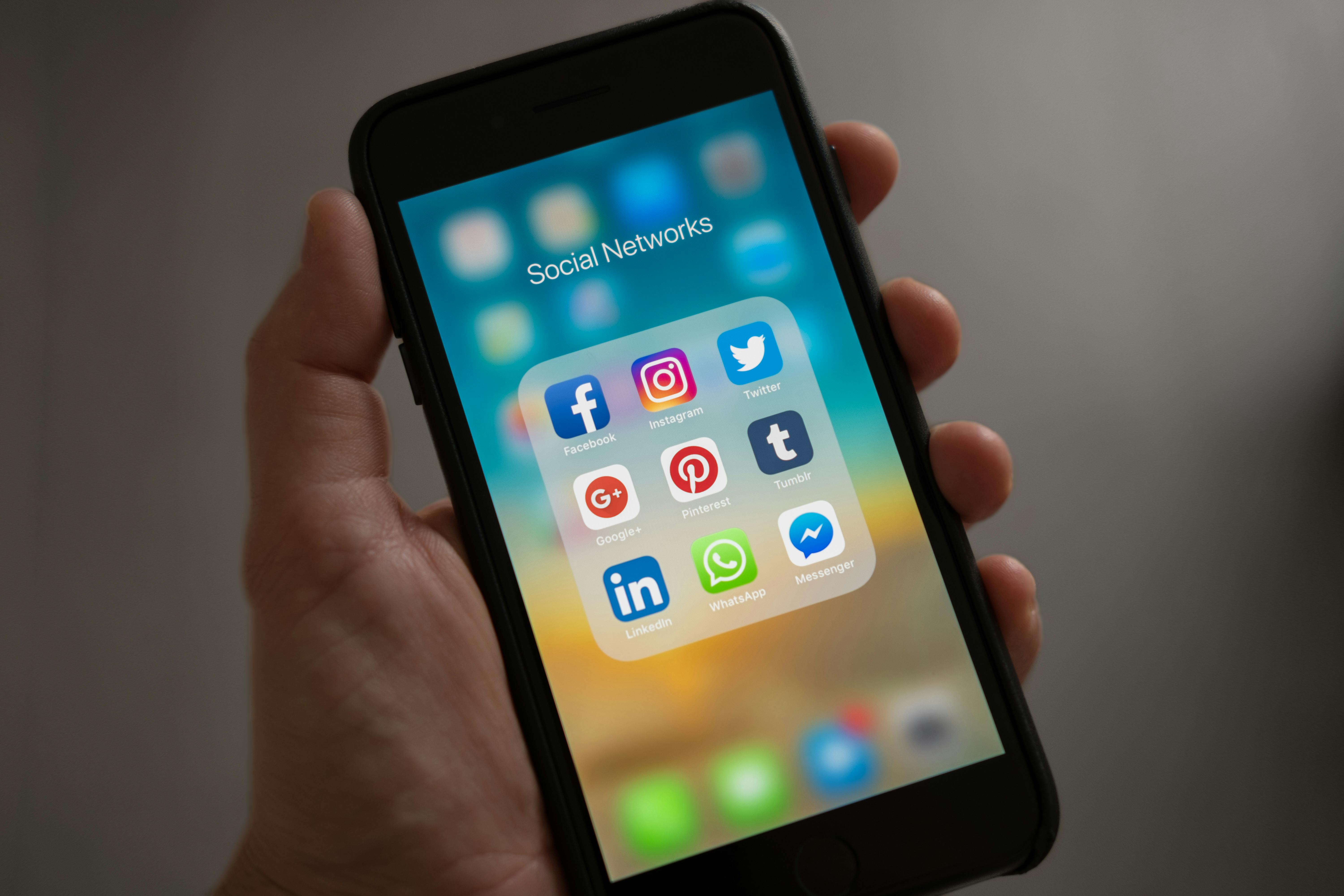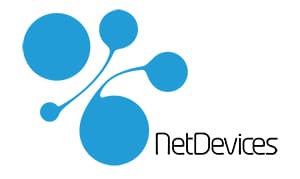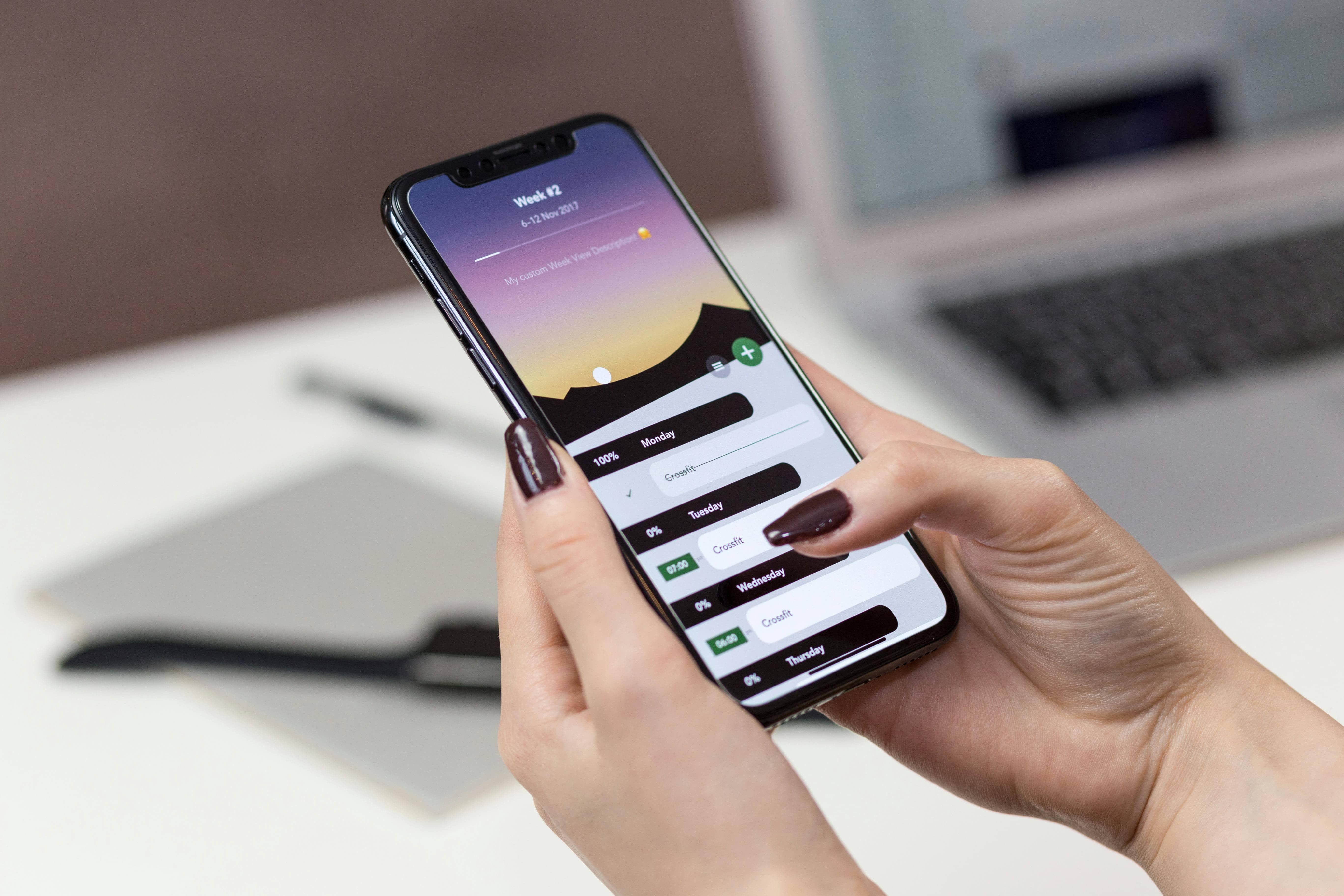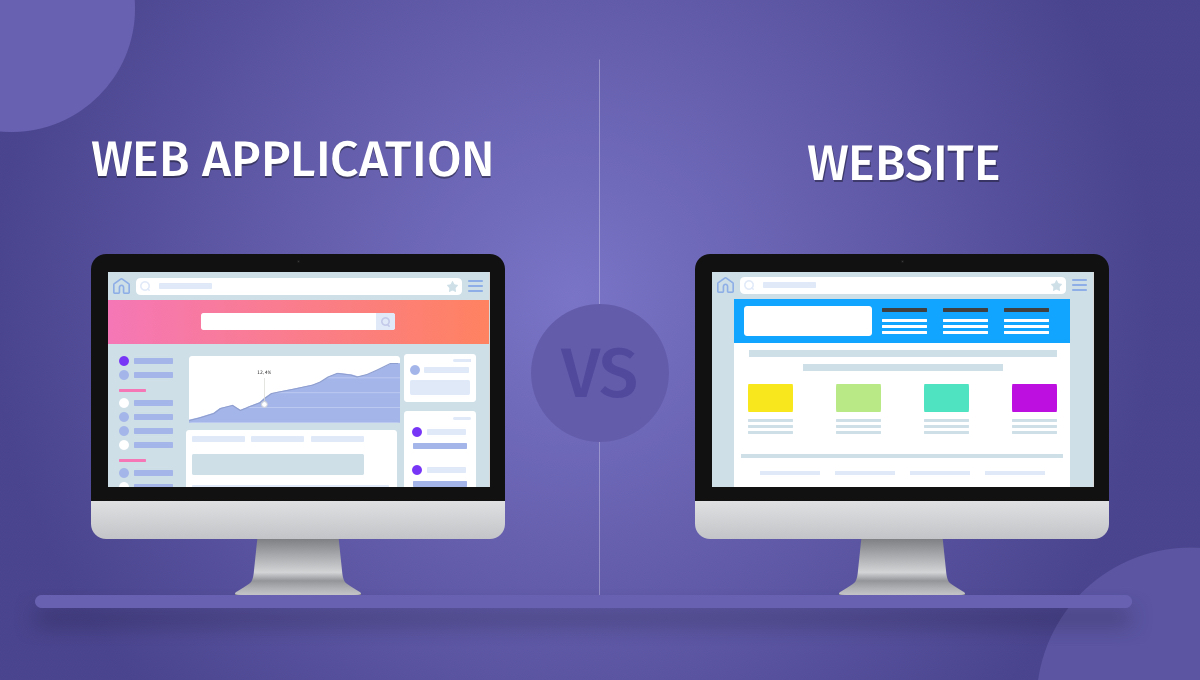Article mis à jour le 19 juin 2025
La rentabilité d’une application mobile dépend de nombreux facteurs, mais elle peut atteindre des niveaux significatifs, avec des marges bénéficiaires pouvant varier de 20 % à plus de 70 %, selon les coûts de développement, les dépenses marketing et les revenus générés par les utilisateurs.

Rentabilité d’une application mobile – Comment génèrent-elles des revenus ?
Les applications mobiles génèrent généralement des revenus par le biais de diverses stratégies de monétisation.
Une méthode couramment utilisée est l’intégration de publicités au sein de l’application, où les utilisateurs voient des annonces. Les développeurs perçoivent des revenus des annonceurs en fonction du nombre d’impressions, des clics ou de l’interaction des utilisateurs avec ces publicités.
Une autre approche consiste en les achats intégrés, où les utilisateurs peuvent acquérir des biens virtuels, des fonctionnalités avancées ou des abonnements directement dans l’application.
Les applications freemium proposent une version de base gratuite et encouragent les utilisateurs à passer à une version payante offrant des fonctionnalités supplémentaires ou une expérience sans publicité.
Certaines applications génèrent des revenus en vendant les données des utilisateurs aux annonceurs, bien que cette pratique suscite des préoccupations en matière de confidentialité.
D’autres appliquent le marketing d’affiliation en promouvant des produits ou des services et en touchant une commission sur les ventes effectuées par le biais de l’application.
Enfin, certaines applications demandent un paiement unique pour être téléchargées et utilisées.
Ces différentes stratégies de monétisation permettent aux développeurs de créer des revenus tout en offrant une gamme variée d’applications et de services aux utilisateurs.
Quel est le modèle de tarification ?
Le modèle de tarification désigne la méthode ou la structure utilisée par une entreprise ou un développeur d’application pour déterminer combien et comment les utilisateurs paient pour utiliser leurs produits ou services. Dans le contexte des applications mobiles, plusieurs modèles de tarification sont couramment utilisés :
Modèles Freemium
Le modèle freemium propose une version gratuite de l’application avec des options payantes pour des fonctionnalités supplémentaires. Cela attire un grand nombre d’utilisateurs tout en offrant des incitations à payer pour des services améliorés.
Les utilisateurs peuvent accéder aux fonctionnalités de base gratuitement, mais doivent payer pour des fonctionnalités avancées, des contenus supplémentaires, ou des avantages exclusifs. Ce modèle est efficace pour convertir les utilisateurs gratuits en clients payants.
Modèles de publicité In-App
Les applications gratuites avec publicité in-app génèrent des revenus en affichant des annonces aux utilisateurs. Les développeurs gagnent de l’argent à partir des impressions, des clics, ou des actions des utilisateurs sur les annonces.
Les formats de publicité incluent les bannières, les interstitiels, les vidéos récompensées, et les annonces natives. La publicité in-app est une source de revenus particulièrement utile pour les applications à fort volume d’utilisateurs.
Modèles d’abonnement
Les applications basées sur l’abonnement facturent des frais récurrents pour l’accès à du contenu ou des services. Ce modèle est courant dans les applications de streaming, les news, et les outils de productivité. Les abonnements peuvent être hebdomadaires, mensuels, ou annuels, offrant une source de revenus stable et prévisible.
Les utilisateurs sont plus susceptibles de rester engagés et de continuer à payer si l’application offre régulièrement du nouveau contenu ou des mises à jour.
Modèles Pay-Per-Download
Dans ce modèle, les utilisateurs paient un coût unique pour télécharger et utiliser l’application. Bien que moins courant, ce modèle peut être rentable pour des applications spécialisées ou à forte valeur ajoutée. Les applications pay-per-download doivent justifier leur coût initial par des fonctionnalités uniques, un contenu exclusif, ou une expérience utilisateur exceptionnelle.
Ce modèle élimine le besoin de revenus récurrents ou de publicité in-app, se concentrant plutôt sur une expérience utilisateur premium.
Stratégies de monétisation
Publicité In-App
Les applications peuvent générer des revenus significatifs en affichant des publicités. Les formats incluent les bannières, les interstitiels, les vidéos récompensées, et les annonces natives.
Pour maximiser les revenus, il est essentiel de trouver un équilibre entre la fréquence des annonces et l’expérience utilisateur. Des publicités bien intégrées et non intrusives peuvent maintenir l’engagement des utilisateurs tout en générant des revenus.
La collaboration avec des réseaux publicitaires de qualité peut aussi optimiser les gains.
Achats In-App
Les achats in-app permettent aux utilisateurs d’acheter des objets virtuels, des fonctionnalités premium, ou des abonnements. Ce modèle est particulièrement populaire dans les jeux mobiles. Les utilisateurs peuvent acheter des monnaies virtuelles, des niveaux supplémentaires, des objets cosmétiques, ou des boosters de performance.
Les achats in-app sont une source de revenus flexible et scalable, permettant aux utilisateurs de dépenser selon leurs préférences et leurs besoins. Les offres spéciales et les promotions peuvent stimuler les achats.
Abonnements
Les abonnements offrent un flux de revenus stable et récurrent. Ils sont utilisés par des applications offrant un contenu ou des services continus, comme les plateformes de streaming et les outils de productivité. Les abonnements peuvent inclure des essais gratuits pour attirer de nouveaux utilisateurs et les convertir en abonnés payants.
La clé du succès des abonnements est de maintenir un flux constant de contenu ou de fonctionnalités de haute qualité pour justifier les frais récurrents.
Ventes de données utilisateur
Certaines applications vendent des données utilisateurs anonymisées à des tiers. Cette pratique est controversée mais peut être une source de revenus importante. Les données peuvent être utilisées pour des analyses de marché, des publicités ciblées, ou des recherches consommateurs.
Il est crucial de respecter les réglementations sur la confidentialité et de garantir la transparence avec les utilisateurs concernant la collecte et l’utilisation de leurs données.
Marketing d’affiliation
Les applications peuvent promouvoir des produits ou services tiers et gagner des commissions sur les ventes générées via l’application. Le marketing d’affiliation peut être intégré de manière transparente, en recommandant des produits ou services pertinents aux utilisateurs.
Les liens d’affiliation et les partenariats stratégiques avec des marques peuvent créer des opportunités de monétisation sans nuire à l’expérience utilisateur. Cette stratégie est efficace pour les applications ayant une forte influence et une audience engagée.
Les indicateurs de rentabilité d’une application mobile
Coûts de développement d’une application mobile
Le développement et l’exploitation d’une application mobile impliquent des dépenses telles que le développement de l’application, la maintenance, l’hébergement, le marketing et le support client.
| Catégorie de dépense | Description | Coût estimé (en EUR) |
| Développement initial | ||
| Développement iOS/Android | Coût de développement pour chaque plateforme | 20,000 – 50,000 par plateforme |
| Design UI/UX | Conception de l’interface utilisateur et expérience utilisateur | 5,000 – 20,000 |
| Infrastructure | ||
| Hébergement et serveurs | Coût de location des serveurs et services de cloud | 1,000 – 10,000 par an |
| Bases de données | Configuration et maintenance des bases de données | 500 – 5,000 par an |
| Tests et assurance qualité | ||
| Tests fonctionnels | Tests manuels et automatisés pour assurer le bon fonctionnement | 5,000 – 15,000 |
| Tests de compatibilité | Tests sur différents appareils et versions d’OS | 3,000 – 10,000 |
| Maintenance et mises à jour | ||
| Corrections de bugs | 2,000 – 10,000 par an | |
| Mises à jour fonctionnelles | Ajout de nouvelles fonctionnalités et mises à jour régulières | 5,000 – 20,000 par an |
| Marketing et acquisition | ||
| Publicité en ligne | Campagnes de marketing sur les réseaux sociaux, moteurs de recherche, etc. | 10,000 – 50,000 par an |
| Optimisation App Store (ASO) | Optimisation de la visibilité de l’application sur les plateformes de téléchargement | 1,000 – 5,000 |
| Support utilisateur | ||
| Assistance technique | Coût du support client et assistance technique | 5,000 – 15,000 par an |
| Légal et administratif | ||
| Licences et frais d’inscription | Frais pour l’inscription sur l’App Store, Google Play, etc. | 100 – 500 par an |
| Conformité et réglementation | Coûts liés à la conformité aux régulations et lois (ex. RGPD) | 1,000 – 5,000 par an |
| Total | 58,600 – 245,500+ |
Développement initial
Le développement initial comprend la conception, la programmation, et les tests de l’application. Les coûts varient en fonction de la complexité et des fonctionnalités requises. Un développement bien planifié et exécuté assure une base solide pour l’application, avec des fonctionnalités intuitives et une interface utilisateur agréable.
Les équipes de développement peuvent inclure des designers, des développeurs, des testeurs et des chefs de projet pour garantir un produit de haute qualité.
Exemple: Le développement initial d’une application comme “Uber” peut coûter plusieurs centaines de milliers d’euros, y compris la conception, le développement, les tests et le lancement.
La maintenance continue, les mises à jour de fonctionnalités et la correction de bugs ajoutent des coûts récurrents.
Maintenance et mises à jour
Une fois l’application lancée, des mises à jour régulières et une maintenance sont nécessaires pour corriger les bugs et améliorer les fonctionnalités. La maintenance continue garantit que l’application reste compatible avec les nouvelles versions des systèmes d’exploitation et répond aux attentes des utilisateurs. Les mises à jour peuvent aussi introduire de nouvelles fonctionnalités, améliorer la sécurité, et optimiser la performance de l’application.
Hébergement et services cloud
Les applications nécessitent des services d’hébergement pour stocker les données et fournir un accès rapide aux utilisateurs. Les coûts dépendent de l’utilisation et des besoins en stockage. Les services cloud offrent une scalabilité et une flexibilité pour gérer les fluctuations du trafic utilisateur.
Les fournisseurs de services cloud, tels qu’AWS, Google Cloud, et Microsoft Azure, proposent des solutions variées pour répondre aux besoins spécifiques des applications mobiles.
Exemple: Une application de vidéos comme “YouTube” nécessite des serveurs robustes pour gérer le stockage et le streaming des vidéos, entraînant des coûts élevés d’infrastructure et de bande passante.
Marketing et acquisition d’utilisateurs
Le marketing et l’acquisition d’utilisateurs sont essentiels pour attirer de nouveaux utilisateurs et faire connaître l’application.
Les stratégies incluent la publicité en ligne, le référencement (SEO), les campagnes sur les réseaux sociaux et les partenariats avec des influenceurs.
L’investissement dans le marketing doit être équilibré par rapport aux revenus générés pour garantir une croissance durable et la rentabilité de une application mobile.
Exemple: Une application de voyage comme “Airbnb” investit massivement dans la publicité en ligne, les campagnes de marketing d’influence et les partenariats pour attirer de nouveaux utilisateurs. Ces coûts peuvent représenter une part significative du budget global.
Support client
Un bon support client est crucial pour résoudre les problèmes des utilisateurs, recueillir des retours et maintenir une satisfaction élevée. Les coûts peuvent inclure les équipes de support, les outils de gestion des tickets et les systèmes de chat en direct.
Un support client efficace contribue à la fidélisation des utilisateurs et à la réduction du taux de désabonnement, améliorant ainsi la rentabilité de une application mobile.
Exemple: “Amazon” doit offrir un support client 24/7 pour son application de shopping, ce qui inclut le personnel de support, les outils de gestion des tickets, et les systèmes de retour et de remboursement.
Quand une application mobile devient-elle rentable ?
Le point mort
Une application mobile devient rentable lorsque ses revenus totaux dépassent ses coûts fixes et variables totaux.
En termes plus simples, elle commence à générer des bénéfices lorsque l’argent qu’elle gagne grâce aux achats intégrés, à la publicité, aux abonnements, ou même au prix d’achat unique devient supérieur aux dépenses engagées pour le développement, l’hébergement, les salaires du personnel, le marketing et d’autres coûts d’exploitation.
Cela signifie que l’application mobile a atteint un point où elle couvre toutes ses dépenses et commence à générer des revenus, nous appelons cela le point mort.
Prenons l’exemple d’une application mobile où les coûts fixes mensuels s’élèvent généralement à environ 10 000 €.
Une estimation approximative du point mort d’une application mobile serait alors d’environ 10 000 € (car il s’agit du coût fixe total à couvrir). Si l’application, par exemple, utilise un modèle d’abonnement facturant 2,99 €/mois, elle aurait besoin d’environ 3 345 abonnés actifs par mois pour atteindre le point mort.
Il faut savoir que cet indicateur peut varier largement en fonction de facteurs tels que la plateforme, la stratégie de marketing, le modèle de monétisation, les coûts opérationnels et la concurrence.
Une application avec de nombreuses fonctionnalités et des coûts de développement élevés aurait évidemment un point mort plus élevé qu’une application plus simple nécessitant moins de capital.
Quel est le revenu moyen d’une application mobile ?
Le revenu mensuel moyen d’une application mobile peut varier de manière significative, généralement entre 1 000 € et 300 000 €, selon plusieurs facteurs tels que le type d’application, ses caractéristiques, sa base d’utilisateurs et sa stratégie de monétisation.
Indicateurs de rentabilité d’une application mobile
1. Revenus par utilisateur (ARPU – Average Revenue Per User)
- Exemple: Une application de jeu mobile comme “Candy Crush Saga” génère des revenus en vendant des vies supplémentaires et des bonus. Si 10 utilisateurs génèrent 100 € de revenus en un mois, l’ARPU serait de 10 €.
2. Coût par acquisition (CPA)
- Exemple: Pour une application de fitness comme “MyFitnessPal”, le CPA inclut le coût de la publicité sur les réseaux sociaux, les promotions Google Ads, etc. Si l’application dépense 1 000 € en marketing pour acquérir 100 nouveaux utilisateurs, le CPA serait de 10 €.
3. Taux de rétention
- Exemple: Une application de streaming comme “Spotify” suit combien de nouveaux utilisateurs continuent à utiliser le service après 30 jours. Si sur 100 nouveaux utilisateurs, 40 continuent à utiliser l’application après un mois, le taux de rétention est de 40%.
4. Valeur à vie de l’utilisateur (LTV – Lifetime Value)
- Exemple: Pour une application comme “Tinder”, si un utilisateur moyen dépense 30 € en abonnements et achats supplémentaires pendant toute la durée de son utilisation, alors la LTV est de 30 €.
Une application mobile devient rentable lorsque ses revenus dépassent ses dépenses totales. Cela est mesuré en comparant la LTV des utilisateurs au CPA.
- Exemple: Si “Netflix” dépense 10 € pour acquérir un utilisateur (CPA) et cet utilisateur génère en moyenne 50 € de revenus tout au long de son abonnement (LTV), l’application est rentable.
Marges et bénéfices
Marges brutes
Les marges brutes indiquent la rentabilité de une application mobile avant les dépenses indirectes, telles que le marketing et le support client. Elles se calculent en soustrayant les coûts directs des revenus. Des marges brutes élevées reflètent une gestion efficace des coûts de production et des revenus substantiels.
Les applications mobiles ont généralement une marge brute moyenne variant de 70% à 80%.
Cela signifie que si votre application mobile génère 20 000 € par mois, votre bénéfice brut serait d’environ 75% x 20 000 € = 15 000 €.
Expliquons cela avec un exemple.
Supposons une application mobile avec 1 000 utilisateurs, chacun dépensant 20 € dans des achats intégrés, ce qui génère un revenu total de 20 000 €.
Cependant, l’application supporte des coûts tels que le développement, la maintenance et les frais du magasin d’applications mobiles.
En supposant que ces dépenses s’élèvent à 5 000 €, le bénéfice brut de l’application mobile serait de 20 000 € – 5 000 € = 15 000 €.
Dans ce cas, la marge brute de l’application mobile serait de 15 000 € / 20 000 € = 75%.
Marges nettes
Les marges nettes prennent en compte toutes les dépenses, donnant une vision claire des bénéfices nets générés par l’application.
Elles se calculent en soustrayant toutes les dépenses (directes et indirectes) des revenus totaux. Une marge nette positive est un indicateur fort de la rentabilité de une application mobile.
Les applications mobiles ont généralement une marge nette moyenne variant de 30% à 55%.
En d’autres termes, si votre application mobile génère 20 000 € par mois, votre bénéfice net pourrait être d’environ 6 000 €, soit 30% du revenu total.
Poursuivons avec le même exemple pour la cohérence.
Si notre application mobile compte 1 000 utilisateurs, chacun dépensant 20 € dans des achats intégrés, le revenu total serait de 20 000 €.
Les coûts directs, comme précédemment indiqué, seraient d’environ 5 000 €.
De plus, l’application mobile fait face à divers coûts indirects tels que le marketing, les dépenses administratives, la recherche et développement, et éventuellement l’espace de bureau. Supposons que ces dépenses supplémentaires totalisent 4 000 €.
Après déduction des coûts directs et indirects, le bénéfice net de l’application mobile serait de 20 000 € – 5 000 € – 4 000 € = 11 000 €.
Dans ce scénario, la marge nette de l’application mobile serait de 11 000 € divisé par 20 000 €, soit 55%.
Menaces pour la rentabilité
Concurrence
La concurrence intense dans le marché des applications mobiles peut réduire les parts de marché et les marges bénéficiaires.
Les développeurs doivent constamment innover, offrir une valeur unique et maintenir une expérience utilisateur exceptionnelle pour rester compétitifs et assurer la rentabilité de une application mobile.
Évolution des préférences utilisateurs
Les préférences des utilisateurs évoluent rapidement, et les applications doivent s’adapter pour rester pertinentes et rentables.
Les développeurs doivent surveiller les tendances du marché, recueillir des retours d’utilisateurs et mettre à jour régulièrement leurs applications pour répondre aux attentes changeantes.
Coûts d’acquisition d’utilisateurs
L’augmentation des coûts d’acquisition d’utilisateurs peut nuire à la rentabilité de une application mobile. Les développeurs doivent trouver des moyens efficaces et rentables d’attirer de nouveaux utilisateurs, tels que le marketing viral, les partenariats stratégiques et l’optimisation des campagnes publicitaires.
Études de cas
Applications utilitaires
Les applications utilitaires, comme les gestionnaires de tâches, les outils de productivité et les applications de gestion financière, montrent comment des fonctionnalités pratiques peuvent attirer un large public et générer des revenus stables.
Par exemple, une application de gestion de budget peut offrir des fonctionnalités de base gratuitement et des analyses avancées via un abonnement premium, augmentant ainsi la rentabilité de une application mobile.
Applications de productivité
Les applications de productivité, telles que les gestionnaires de projet et les applications de prise de notes, démontrent la viabilité des modèles d’abonnement pour une rentabilité à long terme.
En proposant des fonctionnalités collaboratives et des intégrations avec d’autres outils professionnels, ces applications peuvent fidéliser les utilisateurs et assurer des revenus récurrents.
Applications de jeux
Les applications de jeux exploitent les achats in-app et les publicités pour maximiser leurs revenus. Les jeux mobiles peuvent proposer des objets virtuels, des niveaux supplémentaires et des avantages exclusifs contre paiement, tout en affichant des publicités pour les utilisateurs non payants.
Cette combinaison de stratégies de monétisation permet d’optimiser la rentabilité de une application mobile de jeu.
Quelle est la rentabilité d’une application mobile en conclusion ?
Voici quelques estimations plus précises des revenus potentiels que vous pourriez générer en tant que propriétaire d’une application mobile, en fonction de différents modèles de monétisation :
- Publicité :
- Coût par mille (CPM) : Le revenu par mille impressions de publicité peut varier entre 1 et 10 USD. Si votre application génère 100 000 impressions publicitaires par jour, vous pourriez gagner entre 100 et 1 000 USD par jour.
- Revenu mensuel : Pour une application avec 100 000 impressions publicitaires par jour, cela représenterait entre 3 000 et 30 000 USD par mois.
- Achats intégrés (In-App Purchases) :
- Taux de conversion : Environ 1 à 5 % des utilisateurs effectuent des achats intégrés. Si vous avez 100 000 utilisateurs actifs mensuels et que 2 % d’entre eux dépensent en moyenne 10 USD par mois, vous pourriez gagner 20 000 USD par mois.
- Téléchargements payants :
- Prix de l’application : Si votre application est vendue 2 USD et qu’elle est téléchargée 10 000 fois par mois, vous pourriez générer 20 000 USD par mois, moins les commissions des plateformes (généralement 30 %).
- Abonnements :
- Si vous proposez un abonnement mensuel de 5 USD et que vous avez 5 000 abonnés, vous pourriez générer 25 000 USD par mois.
- Freemium :
- Environ 1 à 10 % des utilisateurs gratuits passent à la version premium. Si vous avez 100 000 utilisateurs gratuits et que 5 % passent à une version premium à 5 USD, vous pourriez gagner 25 000 USD par mois.
Exemple pratique combinant plusieurs modèles
Imaginons une application avec :
- 100 000 utilisateurs actifs mensuels.
- 10 000 téléchargements payants à 2 USD par mois (20 000 USD).
- 5 000 abonnés à 5 USD par mois (25 000 USD).
- 50 000 impressions publicitaires par jour avec un CPM de 5 USD (7 500 USD par mois).
- 2 % des utilisateurs effectuant des achats intégrés pour une moyenne de 10 USD par mois (20 000 USD).
Revenu mensuel total :
- Téléchargements payants : 20 000 USD
- Abonnements : 25 000 USD
- Publicité : 7 500 USD
- Achats intégrés : 20 000 USD
Total : 72 500 USD par mois.
Ces chiffres sont des estimations et peuvent varier considérablement en fonction de nombreux facteurs spécifiques à votre application et à votre marché.
Vous avez un projet d’application mobile en tête ?
Chez NetDevices, nous sommes spécialisés dans les solutions technologiques sur mesure qui transforment vos idées en réalité.
Que vous ayez une petite idée ou un grand projet, nous sommes là pour vous aider à le concrétiser.
Pourquoi travailler avec nous ?
- Expérience et expertise : Avec 15 ans dans le domaine et plus de 50 projets réussis, vous êtes entre de bonnes mains.
- Solutions sur mesure : Nous créons des applications qui répondent vraiment à vos besoins.
- Approche collaborative : Nous travaillons main dans la main avec vous, à chaque étape.
Contactez-nous dès aujourd’hui pour une consultation gratuite et découvrir comment nous pouvons vous aider à concrétiser votre projet.
Partager la publication "Quelle est la rentabilité d’une application mobile en 2025 ?"
Kyomi est responsable marketing chez NetDevices. Passionnée par le digital, elle accompagne les entreprises dans leurs stratégies web, SEO et IA pour maximiser leur visibilité et leur croissance.



